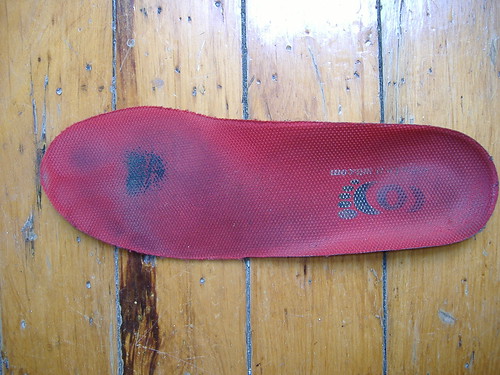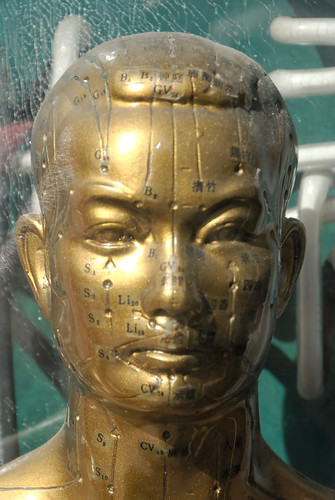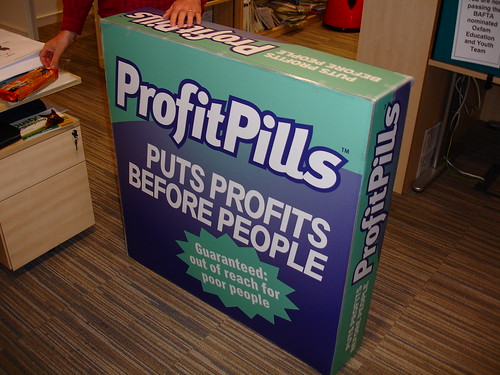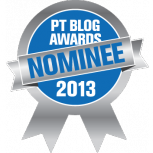 Plantar fasciitis is another orthopedic condition that accounts for a significant number of clinician visits. Approximately 10% of the United States population experiences bouts of heel pain, and these episodes result in 600,000 visits annually to medical professionals for treatment of plantar fasciitis. Riddle and Schappert (2004) noted that this problem accounts for 1% of all patient visits to orthopedic surgeons.
Plantar fasciitis is another orthopedic condition that accounts for a significant number of clinician visits. Approximately 10% of the United States population experiences bouts of heel pain, and these episodes result in 600,000 visits annually to medical professionals for treatment of plantar fasciitis. Riddle and Schappert (2004) noted that this problem accounts for 1% of all patient visits to orthopedic surgeons.
It is also yet another orthopedic condition that has countless treatments that are known to be not only no better than nature, but are counter-intuitive in the process. It is a condition that clinicians continue to over-treat. This makes it another one of those conditions that I would call “the gift that keeps on giving” – because clinicians continued to be reimbursed for treating it, regardless of the scientific literature.
What is the plantar fascia? Are the most commonly-used treatments of any benefit?
 Over the years, I have been fortunate to have practiced alongside a broad range of clinicians - be they acupuncturists, chiropractors, orthopedists, physical therapists, naturopaths, osteopaths, and doctors of oriental medicine. Each profession lends some intriguing and practical perspectives on patient care. In the same breathe, each profession also has their share of lousy practitioners. You will find that quacks and charlatans are not exclusive to the world of alternative therapies, nor is lack of evidence-based practice limited to Eastern medicine.
Over the years, I have been fortunate to have practiced alongside a broad range of clinicians - be they acupuncturists, chiropractors, orthopedists, physical therapists, naturopaths, osteopaths, and doctors of oriental medicine. Each profession lends some intriguing and practical perspectives on patient care. In the same breathe, each profession also has their share of lousy practitioners. You will find that quacks and charlatans are not exclusive to the world of alternative therapies, nor is lack of evidence-based practice limited to Eastern medicine.
There are many that swear by the benefits of Eastern medicine. They will tell you that Western medicine has failed the patient. They will tell you that it (Eastern medicine) has stood the test of time.
On the flip side of the discussion, the proponents of Western medicine will tell you that Eastern medicine has little scientific evidence and has not been subjected to the rigors of the scientific method.
They are in a parallel universe. Perhaps both sides of that coin are correct.
 This is the final article in a series on Recovery-Centered Training (RCT). This new model of human performance is based on the mechanisms of tissue recovery, adaptation, and development. Not only does it focus on optimizing the sport performance capacity of the athlete, but it also serves as a functional basis for injury prevention-based training. A schematic overview can be found below.
This is the final article in a series on Recovery-Centered Training (RCT). This new model of human performance is based on the mechanisms of tissue recovery, adaptation, and development. Not only does it focus on optimizing the sport performance capacity of the athlete, but it also serves as a functional basis for injury prevention-based training. A schematic overview can be found below.
In articles 2 and 3, I discussed the two primary functional elements of RCT – the mechanical and cognitive networks. As I have previously noted, training is only as good as our ability to recover from and adapt to the imposed training stimulus. An important aspect of recovery and adaptation is having the necessary nutritional building blocks to allow it to happen.
 I just received a news flash from the American Physical Therapy Association. Across the news wire today, this news just in from the journal “Health Services Research”: direct access to physical therapy saves money.
I just received a news flash from the American Physical Therapy Association. Across the news wire today, this news just in from the journal “Health Services Research”: direct access to physical therapy saves money.
Wow. Holy Redundant Research, Batman. Another study confirms the obvious that was noted back in 1994 – 17 years ago.
Pardon my sarcasm, but it really doesn’t require any great rocket science to figure that physician-gatekeeper-referred physical therapy is going to cost at least one more visit than non-physician-gatekeeper-referred … if not more. Of course, that would be a doctor’s visit – or two or three. If all other things remain equal, of course.
Two studies, 17 years apart, and we have varied levels of “direct access” attained in various states over that time period. Obviously, something just isn’t sinking in. What prevents direct access from becoming the standard of care in this country?
 Occupy Wall Street is a group of protesters occupying the financial district of New York City. They are there to protest the greed and corruption of Wall Street. Occupy Wall Street has now spread to multiple locales across the United States.
Occupy Wall Street is a group of protesters occupying the financial district of New York City. They are there to protest the greed and corruption of Wall Street. Occupy Wall Street has now spread to multiple locales across the United States.
I think it is time to protest the corruption of the health care system in much the same way.
As it stands right now, most people don’t get too fired up about the dynamics of health care, unless of course it involves mention of “Romney-Care” or “Obama-Care”. Then they rail incessantly about it. The debate is usually based more so on party lines than it is on real data and impact on the patient.
There will come a time, perhaps not so long from now, when patients are going to get fed up with the current health care system. They will get fed up with being under-treated (due to insurance coverage) and/or over-treated (due to providers lacking evidence-based practice).
Health care consumers would do well to pay attention to Occupy Wall Street. They might see a lot of similar complaints.
 This is the third in a series of four articles on Recovery-Centered Training (RCT). This new model of human performance is based on the mechanisms of tissue recovery, adaptation, and development. Not only does it focus on optimizing the sport performance capacity of the athlete, but it also serves as a functional basis for injury prevention-based training. A schematic overview can be found below.
This is the third in a series of four articles on Recovery-Centered Training (RCT). This new model of human performance is based on the mechanisms of tissue recovery, adaptation, and development. Not only does it focus on optimizing the sport performance capacity of the athlete, but it also serves as a functional basis for injury prevention-based training. A schematic overview can be found below.
The second primary functional element of Recovery-Centered Training is the cognitive network. This includes the central nervous system, endocrine system, and immune system. The unified goal of these three systems is to maintain the body’s homeostatic mechanisms: the level of blood glucose, core temperature, and fluid balance. They work together to either facilitate or inhibit these metabolic processes.These systems have a direct impact on the body’s ability to adapt to the imposed demands of the environment.
 Patients put a lot of trust in their health care provider to prescribe treatments and interventions that are in their best interests. But most patients have no idea that many health care providers prescribe treatments that have been shown to have little to no effect, and are no better or worse than Mother Nature herself. Worse yet, these treatments are over-utilized, costing the health care consumer a lot of money in co-pays and premiums.
Patients put a lot of trust in their health care provider to prescribe treatments and interventions that are in their best interests. But most patients have no idea that many health care providers prescribe treatments that have been shown to have little to no effect, and are no better or worse than Mother Nature herself. Worse yet, these treatments are over-utilized, costing the health care consumer a lot of money in co-pays and premiums.
Health care consumerism is critical. Blind faith in one’s provider is no longer safe nor acceptable in the world of health care today.
A patient needs to be educated in order to establish their own series of checks and balances in the health care world. There are many common medical conditions that exemplify the growing need for health care consumerism. In this post, I will start with an orthopedic condition known as frozen shoulder.
 "Running Injuries: Etiology And Recovery- Based Treatment" (co-author Bridget Clark, PT) appears in the third edition and fourth editions of "Clinical Orthopaedic Rehabilitation: A Team Approach" by Charles Giangarra, MD and Robert C. Manske, PT.
"Running Injuries: Etiology And Recovery- Based Treatment" (co-author Bridget Clark, PT) appears in the third edition and fourth editions of "Clinical Orthopaedic Rehabilitation: A Team Approach" by Charles Giangarra, MD and Robert C. Manske, PT.
 Allan Besselink, PT, DPT, Ph.D., Dip.MDT has a unique voice in the world of sports, education, and health care. Read more about Allan here.
Allan Besselink, PT, DPT, Ph.D., Dip.MDT has a unique voice in the world of sports, education, and health care. Read more about Allan here.
 Top 5 finalist in three categories: "Best Overall Blog", "Best PT Blog" and "Best Advocacy Blog".
Top 5 finalist in three categories: "Best Overall Blog", "Best PT Blog" and "Best Advocacy Blog".